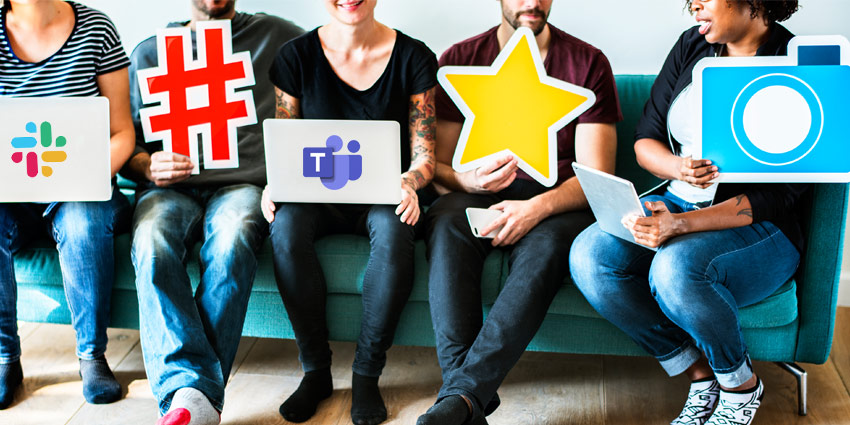The humble chat app has come a long way in the business collaboration and communication world. We’re lightyears away from the experience people used to have on things like Windows Messenger and AIM.
Today, human beings are comfortable with the idea of being constantly connected. We all expect to reach whoever we need in our personal or professional lives through the web. Social media is a common part of the world we live in, and people send messages hundreds of times per day. As a result, the things we expect from our UC and team collaboration tools are evolving too.
In a landscape where personal communication is so simple and straightforward, we expect the same seamless work experiences. However, there are still walls separating the personal and professional social environment.
How Social Should Workplace Apps Really Be?
To see the gap between being “social” at work, and social in your personal life, you only need to look at Facebook. There’s a standard version of Facebook for your everyday social sharing and memes, then Workplace from Facebook – the platform’s business version. But why does this line need to exist? The needs are the same in the professional world as they are in the personal landscape. We still need to stay connected and feel like part of a community.
You could argue that the biggest issues are higher demands for security and privacy – but those are things that everyday people want too.
Persistent chat is another thing that’s gaining a lot of ground in business, but not everyone feels positive about this feature. While it ensures that people have a constant way to stay connected, even when they’re not in the same room, it also means it’s hard to switch off. Constant messages from work means that you’re always being distracted by new notes and new information. That might be a problem for employees trying to remain focused.
Companies are having to ask themselves whether mixing everyday chit-chat with conversations in the workplace is a productive step or not. Should users be able to bridge their social experiences as a consumer or Average Joe, with their work social lives?
Does Being Social Help the Workplace?
The question for many business leaders, is whether channels in team apps are best-suited to team social chat, work conversations, or both? BT, one of the biggest telecommunications companies in the world, recently adopted Workplace from Facebook as a way to enhance engagement. The company said it saw that average post and comment statistics grew by more than 35,000 compared to its previous platform (BT Today).
BT discovered that the adoption of Workplace made a huge difference to team members, with 70% of employees actively using the platform right now. Around 80,000 BT staff across 180 countries are now using workplace. BT’s decision to use Workplace as an internal social channel alongside Teams seems to have made a significant difference to the company’s operations.
Since Workplace from Facebook is a mobile-first solution, it’s better for users when they’re on-the-move. Most of us use our mobile devices to be social anyway, so this feels like a natural progression when adding social tools to the workplace. According to BT, Teams is the place where people go to collaborate. That’s where documents are stored, and where people go to work.
On the other hand, Workplace – though still a business focused app – is more about social connections. It’s where the team members go to have conversations with other employees. On Workplace, BT customers share ideas, innovations, and connections. Team members can bond.
What is the Future of the Workplace?
BT’s approach to using different apps for employee communication and collaboration raises some interesting ideas. Is Workplace not the competitor to Teams that we originally thought? Is having a social platform in the business just as important as having the right collaboration app?
Would mixing the social and collaborative elements of a business application lead to better productivity, or just create more confusion and HR compliance issues? If the world’s can’t mix, can they at least interact in a positive way?
As we continue to venture forward into the new world of work, it’s becoming increasingly obvious that there’s no one-size-fits-all solution. We’re all still trying to discover what really works in the remote, and digital work environment.







